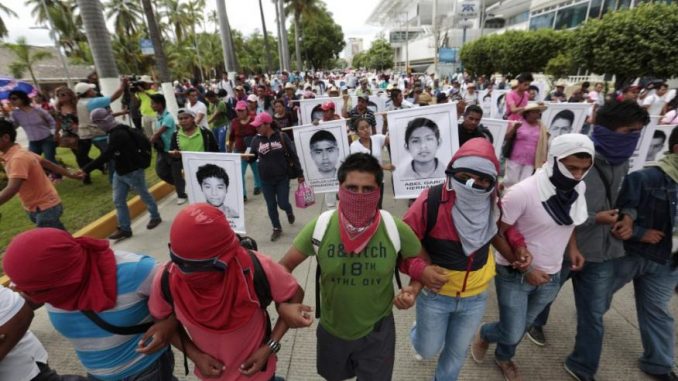
Dave Carr
In a country where, in the last decade of a failed ’war on drugs’ over 100,000 people have been killed and 20,000 gone missing, the fate of the 43 students has galvanised the population against violence and political corruption.
As one political commentator pointed out: "It’s the most severe crisis that the country has experienced in the last 20 years. It’s a sort of catharsis in which everything is rotten; government, parties, the economy, etc. Patience with (Mexican President Enrique) Peña Nieto has reached its bottom."
Adding to ordinary Mexicans’ disgust at the political establishment, a new scandal has emerged over first lady Angelica Rivera’s $7 million mansion, which was reportedly purchased through a loan from a government contractor. Anger over the widening inequality in Mexico has also fuelled the protests.
Attack
It was on 26 September when a bus carrying student teachers from Ayotzinapa to a protest over discriminatory hiring practices and funding of rural colleges was stopped by police under orders from the mayor of Iguala, Jose Luis Abarca.
Six students were shot dead by police at the scene and 43 handed over to a local drugs gang who, according to the authorities, then murdered them and incinerated the bodies.
The authorities say the mayor ran Iguala as a local fiefdom and was in the pay of the drugs gang. He had ordered the police to intercept the students because they intended to disrupt an event where the mayor’s wife was speaking. Both the mayor and his wife then went on the run before being captured.
Justice?
Over 70 people have been held over the murders and abductions but given the thousands of other unsolved kidnapping crimes, many doubt whether the authorities will deliver justice.
Protesters also point out that it took two weeks before Mexico’s president made any statement about the student disappearances. The father of a missing student, Felipe de la Cruz, has criticised the government’s response: "They’ve been trying to fool us. They’ve not been carrying out a proper search", he said.
Like many areas of Mexico, Guerrero state has a recent history of political violence. Student campaigners, viewed as left-wing subversives by the authorities and as a threat by organised criminals, have previously been gunned down.
Vigilante groups have sprung up in parts of the country because of the failure of the government and police to tackle gang-related crime. The militias have blamed police for collaborating with the gangs.
The US Obama administration has remained tight-lipped about the current protests, yet it and its predecessor governments have spent billions of dollars supporting Mexican governments’ ’war on drugs’. This is despite the Global Commission on Drug Policy concluding that "repressive measures will not solve the drugs problem" and that "the war on drugs has not, and cannot, be won". Indeed, there is clear evidence that the US’s drugs war has actually deepened and perpetuated the violence.
Causes
Criminal violence is also fed by inequality, poverty and corruption. In the absence of decent education provision and jobs there is a ’lost generation’ of young people who are lured into working for criminal gangs.
The improvement of young people’s lives depends on major spending reforms. But such reforms are opposed by capitalist politicians who instead advocate shrinkage of the welfare state and who see the role of the state as simply a financial guarantor for capitalism.
The students’ tragedy underscores the impasse in capitalist society and the need for socialist policies through a socialist government.

Be the first to comment